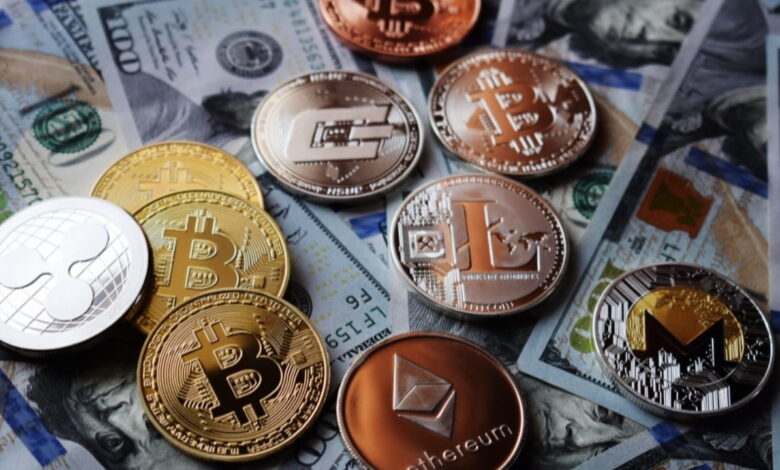Altcoins Show Strong Recovery as Momentum Returns
Altcoins rebound as crypto momentum returns. Explore drivers, data, strategies, and risks behind the recovery—and what it means for investors now.

The digital asset market rarely moves in a straight line, but when altcoins awaken, the shift can feel sudden and dramatic. After months of choppy action and risk-off sentiment, altcoins show strong recovery as market momentum returns across major sectors. Liquidity has improved, traders are rotating out of sidelines, and on-chain activity is picking up. While Bitcoin often sets the tone, the latest bounce suggests capital is filtering down the risk curve into large-cap and mid-cap alternative cryptocurrencies. This renewed appetite doesn’t erase volatility, yet it does set the stage for smarter participation. Understanding why altcoins are recovering, which niches are leading, and how to navigate entries and exits can make the difference between chasing and positioning.
In this deep dive, we unpack the macro and micro forces behind the recovery, dig into market structure, examine on-chain metrics, and outline practical strategies for different profiles of investors. We also address the risks—because sustainability matters more than a single green week. By the end, you’ll have a grounded view of what this rebound means, how to evaluate opportunities, and how to protect your portfolio as the cycle evolves.
Why Altcoins Are Recovering Now
The clearest question deserves a clear answer: why are altcoins recovering now rather than earlier? The explanation begins with liquidity conditions, risk tolerance, and structural flows within crypto.
When global risk appetite improves, capital usually moves first into the most liquid crypto asset—Bitcoin. As Bitcoin dominance stabilizes or rolls over, a portion of that capital rotates into altcoins with higher beta. That rotation has intensified as trading volumes climb on spot markets and derivatives open interest expands, reflecting growing confidence that a cyclical uptrend is underway. At the same time, on-chain activity—from DeFi transactions to stablecoin velocity—has firmed, suggesting the rebound isn’t purely speculative.
Another driver is the steady cadence of protocol upgrades, layer-2 scaling breakthroughs, and new real-world asset pilots. Each development improves the narrative quality around altcoins and attracts fresh research attention. The combination of better narratives, healthier liquidity, and improving fundamental footprints is exactly what altcoins needed to climb from oversold levels.
Macro Winds at the Back: Rates, Liquidity, and Risk Sentiment

Crypto does not operate in a vacuum. Softer inflation prints, pauses or pivots in central bank policy paths, and improving global liquidity generally lift risk assets. As bond volatility cools and equities stabilize, investors become more comfortable stretching into higher beta exposures. Altcoins, with their mixture of innovation premium and volatility, are natural beneficiaries when macro headwinds fade.
The U.S. dollar index and real yields also matter. A consolidating dollar and easing real rates often correspond with strength in growth assets, including crypto market segments outside Bitcoin. While correlations can break down, the broad backdrop today favors a constructive tone for altcoins—provided macro doesn’t surprise to the downside.
Rotation Underway: From Bitcoin to High-Quality Altcoins
Historically, sustained alt-season behavior appears only after Bitcoin establishes a durable range or uptrend. The present recovery fits that script. Investors first sought safety in Bitcoin; once it digested gains, attention shifted to large-cap altcoins with clear product-market fit or robust developer ecosystems. From there, momentum extends to mid-caps riding hot narratives—DeFi tokens, GameFi, liquid staking, cross-chain infrastructure, and AI-adjacent plays.
This rotation is not indiscriminate. Projects with low circulating supply, heavy token unlocks, and thin liquidity often lag despite the tailwind. Conversely, networks with expanding active addresses, genuine fee revenue, and transparent treasury management tend to lead. In other words, quality is beating hype, even inside a risk-on phase.
On-Chain Signals That Validate the Rebound
Price is the market’s headline, but on-chain metrics write the story. Several data points typically corroborate an altcoin recovery:
Active Addresses and Transaction Counts
A sustained rise in active addresses and transactions across prominent networks implies utility is increasing, not just speculation. When this growth coincides with rising fees paid by users—without a proportional spike in spam—it indicates real demand for block space and services.
Stablecoin Flows and Exchange Reserves
Stablecoin netflows onto exchanges often precede risk-taking. More stablecoin liquidity tends to mean more potential bids for altcoins. Meanwhile, declining exchange reserves for certain tokens may hint at long-term accumulation, especially if staking and DeFi deposits rise simultaneously.
Developer Activity and Protocol Revenue
Altcoins backed by intense developer activity—commits, releases, audits—and tangible protocol revenue have an edge. Revenue signals product usage; when fee capture mechanisms feed value back to token holders (via burns, buybacks, or staking yields), the investment case strengthens.
Sectors Driving the Altcoin Bounce

Not all altcoins rally equally. Understanding which sectors are powering the move helps you allocate more intelligently.
DeFi’s Second Wind
The first DeFi wave proved that permissionless markets could bootstrap liquidity and financial primitives. Today’s resurgence centers on sustainability: DEXs improving capital efficiency, lending protocols optimizing risk engines, and derivatives venues offering deeper order books. As market capitalization grows for quality DeFi names, fee-generating platforms with sticky users are seeing outsized bids.
Layer-2 Scaling and Rollup Ecosystems
As base-layer block space remains scarce and expensive during peak activity, layer-2 networks shine. Optimistic and ZK rollups continue to reduce costs and improve throughput, attracting users and developers. Tokens that accrue value from network usage or security provisioning are catching bids, particularly where bridges and sequencer revenues are becoming transparent.
Real-World Assets (RWA) and On-Chain Credit
Tokenized real-world assets and institutional on-chain credit rails are more than a narrative. They’re enabling lower-cost financing and programmable settlement. As underwriting improves and oracles mature, protocols in this niche may capture durable cash flows and institutional partnerships, lending resilience to their tokens during broader market swings.
Interoperability and Cross-Chain Liquidity
The ability to route value and messages across chains remains a critical piece of the puzzle. Protocols that reduce liquidity fragmentation and make composability practical across ecosystems can unlock usage that wasn’t previously feasible. Tokens tied to these rails often outperform when developers can plug in and ship without friction.
AI, Data Availability, and Modular Blockchains
The frontier is busy. Some altcoins are riding the intersection of AI inference, data availability layers, and modular designs that separate execution, settlement, and data storage. While early, this stack may support new classes of apps with scalable economics. As proof-of-concepts graduate to production, tokens benefiting from real demand rather than hype are getting reevaluated upward.
Technicals: Reading the Chart Without Marrying It
Technical analysis is not a crystal ball, but it can frame risk. In recovering altcoin markets, traders often look for higher lows, reclaiming key moving averages, and breakouts from multi-month ranges. Volume confirmation matters; breakouts on weak volume are prone to failure. Relative strength against Bitcoin and sector leaders can highlight rotation early, while funding rates and perp premiums help identify crowded longs. None of this replaces a thesis, but it helps you avoid poor timing and manage volatility.
Fundamentals: Beyond Hype Cycles
Fundamentals still drive long-term outcomes. Ask whether the project solves a real problem, whether the token is necessary to the solution, and whether the tokenomics align incentives for users, validators, and developers. Examine treasury transparency, runway, and governance processes. Scrutinize emissions schedules and unlock calendars—even strong projects can underperform if aggressive emissions swamp demand. In a recovery, fundamentals filter durable winners from momentum mirages.
See More: Altcoins Hold Strong Why a Bullish Macro Is Brewing
Risk Management in a Rising Market
Momentum can seduce even experienced investors into over-exposure. A simple framework keeps you grounded:
Position Sizing and Drawdown Control
Define a maximum allocation per asset and a maximum portfolio risk. For example, cap single-asset exposure to a fixed percentage and set a total drawdown threshold that triggers de-risking. This discipline prevents one mistake from defining your cycle.
Staggered Entries and Exits
Use laddered entries to average into strength without chasing every candle. Plan profit-taking in tiers at predefined levels, especially on illiquid names. A rules-based approach counters the instinct to hold parabolic moves too long.
Stablecoin Buffers and Hedging
Keep a stablecoin buffer for opportunities and stress. If derivatives are available and you understand them, hedging via perpetuals can reduce portfolio beta during uncertain stretches. Hedging is an insurance policy; treat it accordingly.
Portfolio Construction for the Recovery Phase
An intelligent altcoin portfolio reflects your time horizon and conviction.
Core, Satellite, and Experimental Buckets
A balanced approach places robust, large-cap altcoins with network effects in the core bucket. Satellite positions include mid-caps with strong catalysts and revenue visibility. A small experimental sleeve targets early-stage plays with asymmetric outcomes. This structure helps you participate in upside while containing tail risk.
Diversification Across Narratives
Diversification works when exposure is truly differentiated. Spread allocations across DeFi, infrastructure, layer-2, RWA, and interoperability rather than owning ten variations of the same theme. Within sectors, select assets with distinct mechanisms and user bases to reduce correlation spikes.
Staking, Restaking, and Yield Considerations
Where appropriate, staking can convert idle holdings into yield while reinforcing network security. Understand slashing risks, lockup periods, and validator reliability. Newer primitives like restaking amplify yield but introduce layered protocol risk; know what guarantees actually back your rewards. Yield is never free—evaluate it like credit.
Catalysts That Could Extend the Altcoin Rally
Altcoin uptrends become sustainable when they transcend pure speculation. A few catalysts to watch:
Major Protocol Upgrades and Roadmap Deliveries
On-time delivery of hard forks, scalability improvements, or cross-chain integrations can reset valuations. When upgrades reduce fees, improve developer ergonomics, or increase throughput, users follow and token economics often improve.
Institutional Participation and Compliance Milestones
Institutions increasingly demand clarity on compliance and custody. Progress on regulated products, clearer jurisdictional guidance, or large partnerships with established fintechs can open capital channels that stabilize demand for high-quality altcoins.
App Breakouts and User Adoption
Sometimes a single breakout application can lift an entire ecosystem. Whether it’s a new consumer dApp, a viral GameFi experience, or a must-use DeFi primitive, authentic adoption shifts expectations. Watch daily active users, retention, and revenue far more than vanity metrics.
Red Flags Amid the Green
A healthy recovery includes skepticism. Be cautious with projects that rely on opaque promises or reflexive token incentives. Beware of insider unlocks that dwarf float, wash trading, and liquidity that disappears off-hours. Read audit reports but don’t treat them as guarantees; smart contract risk is ever-present. If the only pitch is “number go up,” there is no pitch.
How to Research Altcoins Without Drowning in Noise
Signal beats noise when your process is consistent.
Start With Primary Sources
Begin with whitepapers, docs, and governance forums to understand design choices. Follow GitHub commits and read post-mortems for incidents. Primary sources reveal whether teams communicate clearly and deliver on time.
Track On-Chain Data You Can Explain
Choose a handful of metrics—active addresses, TVL for DeFi, fee revenue, supply distribution—and stick with them. It’s better to understand a few numbers deeply than to chase dozens you can’t connect to valuation.
Compare Peers and Map Moats
Every sector has comparables. Map how your target altcoin differentiates on cost, performance, incentives, and ecosystem support. Identify the moat—is it network effects, superior tech, or partnerships? Without a moat, excess returns fade.
Trading vs. Investing: Two Different Games
Traders exploit momentum and liquidity, using tight risk controls and shorter holding periods. Investors underwrite fundamentals, withstand volatility, and scale in over time. You can do both, but not with the same capital or psychology. Decide your game before you press buy. When altcoins show strong recovery as market momentum returns, traders may lead price discovery—but investors determine how long the gains endure.
The Psychology of a Rebound
Markets climb a wall of worry. Early, participants doubt every green candle; mid-cycle, disbelief turns to cautious optimism; late, euphoria blinds risk perception. Knowing this arc helps you avoid buying from the patient and selling to the impulsive. Keep a journal of your theses, entries, and exits. If your conviction relies only on price going up, you don’t have conviction—only momentum.
What Could Derail the Recovery
Even strong setups can unravel. A sharp macro shock, regulatory surprise, or major security breach can shift sentiment overnight. Over-levered positions exacerbate drawdowns when funding rates flip and liquidations cascade. Additionally, if Bitcoin dominance surges because investors flee back to safety, altcoins can underperform even if prices don’t collapse. Preparing for these scenarios with prudent sizing, buffers, and hedges is not pessimism—it is professionalism.
A Practical Blueprint for the Next 90 Days
First, clarify your objective: are you compounding long-term exposure, or are you attempting to capture swing moves? If long-term, build your core-satellite structure, set buys at levels you accept emotionally, and stake or deploy tokens productively where risk is understood. If trading, identify relative strength across sectors and use liquid pairs, honoring stop losses.
Second, set measurable checkpoints. Revisit theses every two weeks: has developer activity accelerated, have users grown, did a roadmap item ship? If not, lighten. If yes, consider adding on constructive pullbacks.
Third, keep dry powder. In crypto, the best opportunities often arrive on red days. A reserve of stablecoins and a shortlist of targets ensure you can act when prices dislocate.
Finally, protect your downside. Diversify across narratives, avoid over-concentration in illiquid names, and remember that realized profits beat theoretical ones. Momentum is back; discipline keeps it yours.
Conclusion
Altcoins show strong recovery as market momentum returns, but durable success still comes from clarity, caution, and conviction. The recovery is being underpinned by healthier liquidity, improving on-chain metrics, and concrete progress across DeFi, layer-2, RWA, and interoperability. Whether you are trading or investing, the path forward is the same: focus on quality, respect risk, and let data—not noise—guide your decisions. Crypto cycles reward the prepared. With the right framework, this rebound can be more than a headline; it can be an opportunity you capture with consistency.
FAQs
Q: Are altcoins recovering because of speculation or real usage?
Both influences are present, but this phase features improving on-chain activity, growing protocol revenue, and steady developer output alongside better macro conditions. The mix suggests the rebound has substance beyond short-term hype.
Q: Which altcoin sectors look strongest right now?
Leaders include DeFi platforms with fee capture, layer-2 scaling ecosystems reducing costs, RWA tokenization protocols, and interoperability solutions that fix liquidity fragmentation. Strength can rotate, so monitor usage and revenues rather than narratives alone.
Q: How can I manage risk while participating in the recovery?
Use position sizing rules, staggered entries, and preplanned profit-taking. Maintain a stablecoin buffer for dislocations and consider hedging if you’re comfortable with derivatives. Avoid over-exposure to illiquid tokens or names with heavy unlock schedules.
Q: Does Bitcoin dominance have to fall for altcoins to outperform?
Not necessarily, but a stabilizing or gently declining dominance often coincides with stronger altcoin performance. The key is whether liquidity is expanding and whether investors feel comfortable taking on higher beta exposure.
Q: What signals indicate the altcoin rally might be fading?
Watch for deteriorating volume, rising funding rates with flat price, failure to hold reclaimed support, stalling active addresses, and negative stablecoin flows. If multiple signals flash at once, de-risk and reassess your theses.



